Richard Burke of Turlough
Lord of Mac William Íochtair
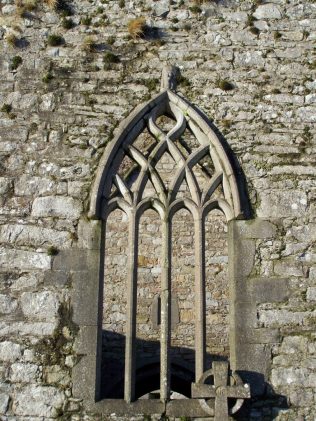
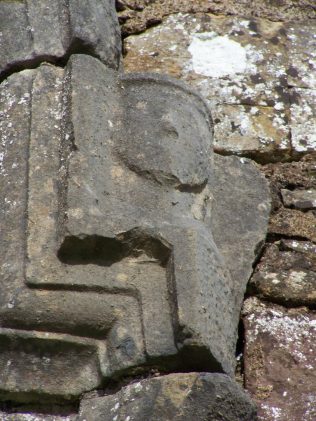
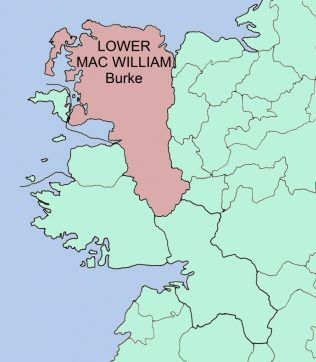
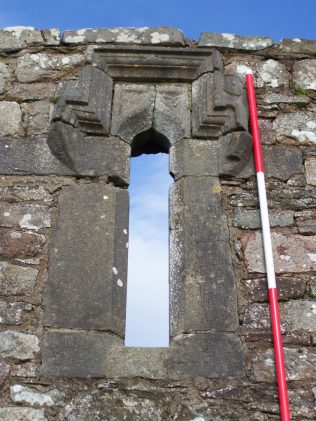
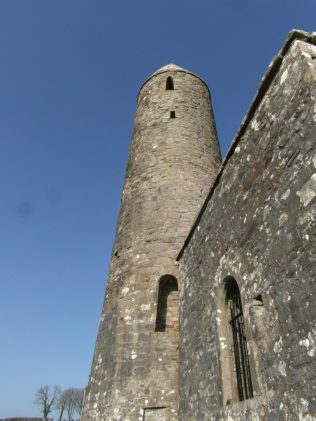
Before Mayo Existed
Technically speaking, Richard Burke of Turlough lived and died before the county of Mayo was formed, the county being shired as part of the Composition of Connaught in the late sixteenth century. Nonetheless, the area he controlled as Lord of Mac William Íochtair (Lower Mac William Burke) covered a large proportion of the area that today we know as Mayo.
The Burkes
The Burkes are variously known as de Burgo or de Burgh during the medieval period and were of Anglo-Norman ancestry. Richard was the son of Sir Thomas. After Sir Thomas’s term as Mac William Íochtair, Richard’s older brother, Walter, succeeded to the title, holding it from 1402-1440. During their time in Ireland, the Burkes had become Gaelicised, especially the Burkes of Mac William Íochtair. They had thus stopped practicing primogeniture, whereby the oldest son automatically inherited his father’s lands and title and instead adopted Gaelic customs. Three of Richard’s brothers held the title of Mac William Íochtair before him, namely Walter (1402-40), Edmund na Féasóige (of the beard) (1440-58) and Thomas Óg (1458-60). This pattern of inheritance was often likely to lead to inheritance disputes due the number of competing rivals; primogeniture was typically more much clear cut, although less likely to benefit younger sons.
The Family
The Burkes of Mac William Íochtair had split from their counterparts to the south after the 1333 murder of William de Burgo, third earl of Ulster and Connacht, by the ‘Foreigners’ or ‘Galls’ of Ulster. This event was recorded in the Annals of Connacht and the Annals of Loch Cé. William’s sole offspring was an infant daughter called Elizabeth. His lands in Connacht were then seized by two of Elizabeth’s cousins Ulick (or William) of Annaghkeen and Edmund Albanach (‘the Scot’), who feared the lands would be lost to the family. Edmund became Mac William Íochtair (Lower) in northern Connacht (west Mayo), while Ulick became Mac William Uachtair (Upper), based in southern Connacht (east Galway), leading a group also known as the Clanricard(e) Burkes. Richard, the subject of this article, was in 1460 to succeed to the title once held by Edmund Albanach.
Richard
Richard is probably best known as having been the founder of Burrishoole friary, an event that attracted some notoriety due to the friary having been founded in haste without the requisite papal permission. The event is discussed in more detail here. The phenomenon of patrons establishing religious houses partly as retirement homes for themselves is well attested in Ireland and elsewhere during the medieval period. Richard’s motivation seems, at least in part, to provide a place where he could ‘take the habit’ and live out his final years. The friary was founded c.1469 and in the Annals of Connacht for 1469 we find the following record:
“Richard son of Thomas Burke resigned his lordship and Richard son of Edmund Burke was made king in his stead; and in very sooth this is no ‘tone for an egg’”
Richard’s abdication of his lordship must surely have been newsworthy in his day, a striking example of a man relinquishing his earthly power for the sake of his immortal soul. It begs the question of what sins Richard had committed in his lifetime that required such a grand gesture of atonement. The subsequent scandal about the ‘irregular’ foundation of Burrishoole friary appears to have arisen after Richard’s death and was resolved by Pope Innocent VIII in 1486. Richard’s accommodation at the friary is likely to have been very basic, consisting perhaps of wooden huts. The 1486 Papal Brief of Foundation permitted the friars to build a more substantial church, with tower and bell, in addition to friars’ living quarters.
A subsequent entry in the Annals of Connacht for 1473 records Richard’s death:
“Macwilliam Burke, that is Richard, died. He had resigned his lordship before this time, for the sake of God”.
The Gaelic Annals
The various Gaelic annals are a useful source of evidence for a limited range of aspects of medieval life. While they record little of people’s everyday lives, they contain numerous obituaries of eminent people, such as kings and clerics. Even though Richard had resigned his lordship about four years earlier, the annalists considered his passing worthy of record. His successor as Mac William Íochtair was Ricard Ó Cuairsge, son of Richard’s brother Edmund na Féasóige. There is no record of the place of Richard’s burial. It is likely that he would have been interred at Burrishoole. Many founders of religious houses sought burial in the convents they had established. Indeed, it was one of the benefits of patronage to receive burial rights within the church of the monastery one had supported in life. Founders were often accorded the privilege of burial in a location close to the friary’s principal altar at the east end of the church. However, it is worth noting that Richard’s brother, Edmund na Féasóige, and a number of their successors as Mac William Íochtair were buried in Galway Franciscan friary, according to evidence contained in the friary’s obituary book. The friary had been founded by their ancestor William Liath (the Grey) Burke who died in 1324. As Richard’s name is not recorded in the Galway Franciscan friary obituary book, it is unlikely that he was buried there. In the absence of documentary evidence to the contrary, Burrishoole is the most likely burial site.







No Comments
Add a comment about this page